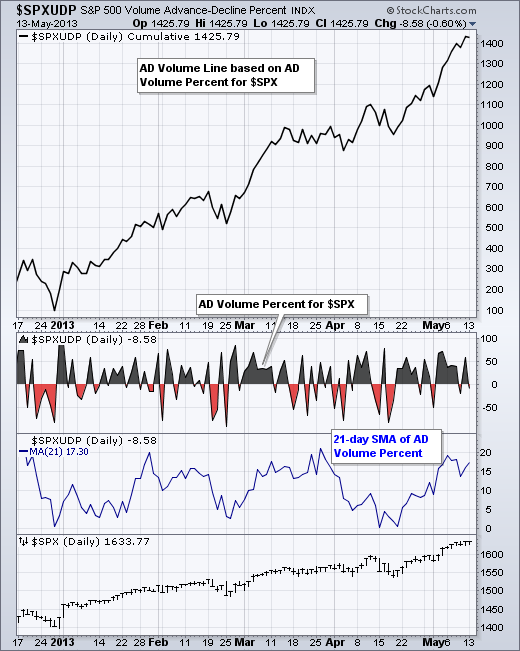|
|
Table of Contents
StockCharts AD Volume Percent
Overview
StockCharts maintains and publishes breadth indicators for over a dozen indices and sectors. This data includes advancing issues, declining issues, advancing volume, declining volume, new highs, new lows and more. Indicators from these data sets can be used to create AD Lines, AD Volume Lines and more.
Details
Symbol Group: Advance-Decline Volume Percent Publisher: StockCharts Update Frequency: End of Day (EOD).
These indicators are updated after
the market close, usually by 6:00 PM ET. Current Symbols: Catalog link
Data Characteristics
StockCharts uses a three-step process to calculate breadth indicators. First, StockCharts maintains component lists for these indices. Second, our scan engine uses these component lists to run scans based on the price data for the individual stocks. Third, the data is then updated and published to our website.
This “in-house” data may differ from other sources due to differences in the index components and price data. Index components change and require updates on a regular basis. Additionally, note that StockCharts uses dividend-adjusted data for its calculations, while other sources may use non-adjusted data.
Definition
Advance-Decline Volume Percent (AD Volume Percent) is a breadth indicator that measures the percentage of Net Advancing Volume for a particular group of stocks, such as an index or ETF. Net Advancing Volume equals the volume of advances less the volume of declines. AD Volume Percent equals Net Advancing Volume divided by total volume for the group. AD Volume Percent fluctuates between -100% and +100%. Chartists can use this indicator to create oscillators and the AD Volume Line.
Chart Example

Symbol List
StockCharts.com users can access an up-to-date list of symbols for all our Advance-Decline Volume Percent indicators. From this list, click the “Mentions” icon to the right of a specific symbol for more details about the symbol, as well as recent mentions in Public ChartLists, blog articles, and more.
